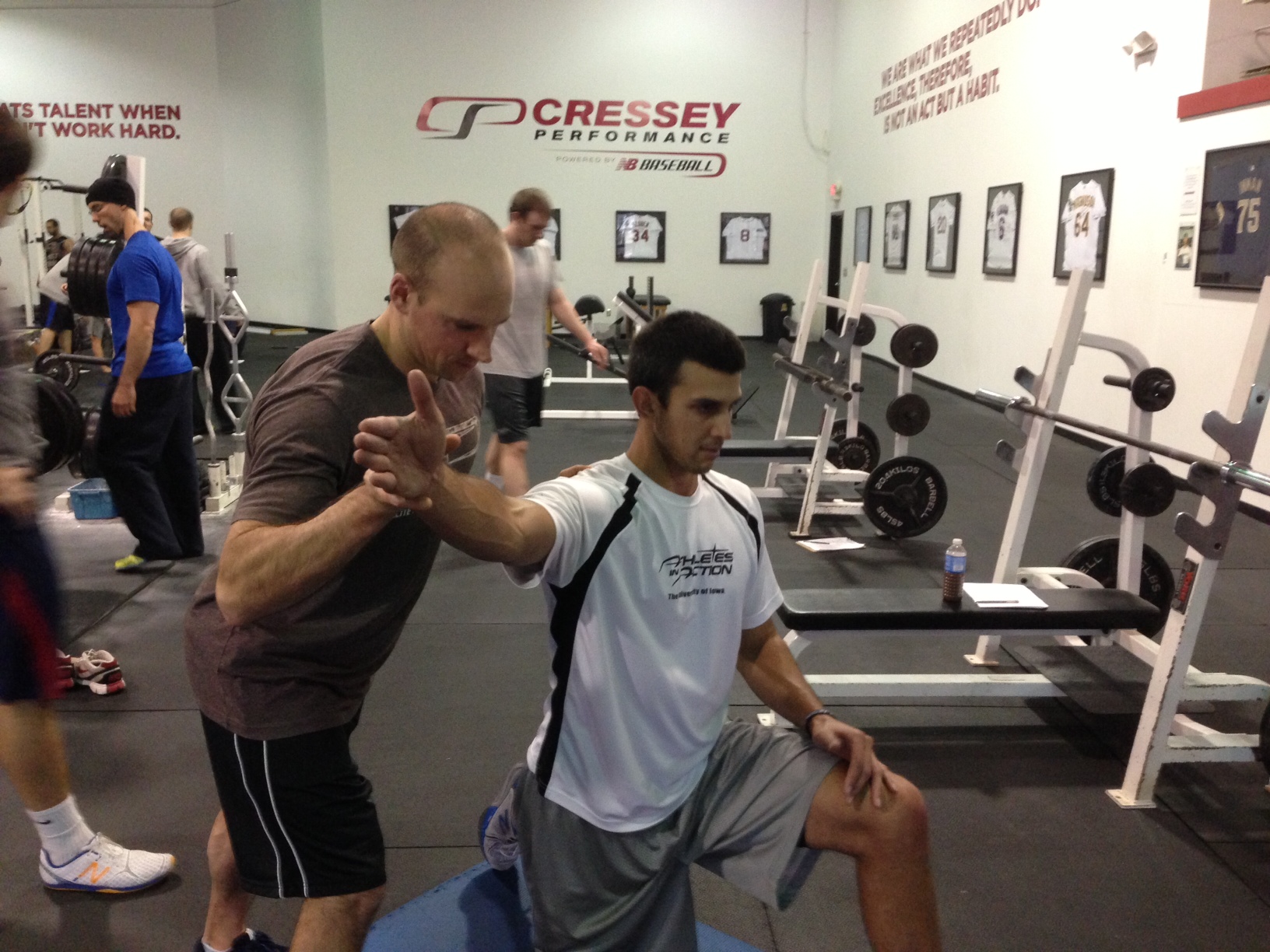A Good Rule of Thumb for Working with Injured Pitchers
Written on March 26, 2009 at 6:06 am, by Eric Cressey
If you have a pitcher athlete with good shoulder ROM (normal GIRD and symmetrical total motion), sufficient thoracic spine mobility, good scapular stability, and adequate tissue quality who has rehabbed and long-tossed pain-free, but has shoulder/elbow pain when he gets back on the mound, CHECK THE HIPS!
Staying closed and flying open will be your two most common culprits; this cannot be seen in a doctor’s office! Changing lead leg positioning is a quick way to indirectly (and negatively) impact the position of the arm. Guys who stay closed have to throw across their body, and guys who fly open often have problems with the arm trailing too far behind (out of the scapular plane).
For more information, check out the Optimal Shoulder Performance DVD Set.
Sign-up Today for our FREE Baseball Newsletter and Receive a Copy of the Exact Stretches
used by Cressey Performance Pitchers after they Throw!
Category Baseball Content, Blog | Tags: Baseball Workout, Building The Efficient Athlete, Labrum, Magnificent Mobility, Pro Baseball Pitcher Workout, Rotator Cuff Exercises, Rotator Cuff Rehab, Shoulder Exercises, Shoulder Health, Shoulder Impingement, Shoulder Pain, Shoulder Rehab, Tommy John Surgery, Unstable Surface Training
|












May 7th, 2009 at 8:54 pm
At the Major League level, the hips were the primary area of focus for all of the pitchers we worked with. Through indirect functional exercises designed to help them load better, and through direct strengthening via a simple hip miniband, we placed a huge priority on not only increasing the strength and mobility of the hips, but increasing the pitcher’s awareness of how important this area was on maintaining arm health.
Jeff Cavaliere – Former Head Physical Therapist NY Mets
March 19th, 2013 at 9:00 am
How can a college baseball pitcher improve tissue quality? Do we just foam roll and other soft tissue work or are there other methods to improve the tissue quality.
Along with that, is there anything that can decrease tissue quality that should be avoided?
March 19th, 2013 at 2:12 pm
Ian,
Those are a good start, and I’d also add good soft tissue work with a qualified manual therapist to that list.
In terms of negatively impacting tissue quality, alcohol is a huge one. That said, any kind of heavy eccentric stress – particularly throwing – will do it, too.